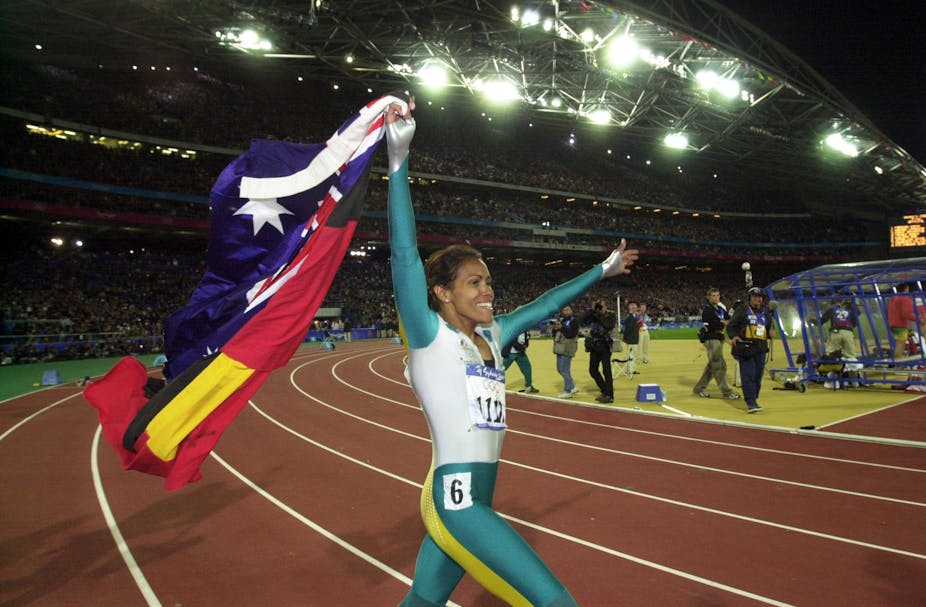All too often the matter of Australian Aboriginal identity is decided superficially – by looking at a person’s face and general appearance. Colour is often the measure of Aboriginality, since the original peoples were black or brown, depending on their location in the country.
But, given recognition and identity are areas of acute importance to Aboriginal people, this bears closer scrutiny. I write here with insider knowledge: I am Warraimay from the mid north coast of New South Wales.
Questions about the right of people of mixed-race to identify as Aboriginal are often raised by the settler colonial society. The most notorious example was in 2011 when Andrew Bolt wrote a column in the Herald Sun questioning the claims to Aboriginality of several high profile light-skinned Aboriginal people – who then successfully brought legal action against him.
That was a classic case of questioning the identity of Aboriginal people of mixed-race because they did not “look like” the stereotype of an Aboriginal person.
It’s not only white people who have formed families with Aboriginal people to produce children of mixed race. People of South Asian, Middle Eastern and African descent, among others, have done so from the early 19th century to the present. Those people, while of mixed race, can seem to be “more Aboriginal” because they are of a darker colour.
Who decides on identity?

The task of deciding who is Aboriginal is increasingly that of state-based organisations, such as universities and government departments. All too often the important subject of identity is decided by subjective assumptions and outdated stereotypes.
The all-important research-base for Aboriginal descent and connection is seldom considered. Understanding the history of the Aboriginal family provides us with a better way to approach the complex issue of Aboriginal identity.
Findings about Aboriginal identity are an important aspect of the research that has been undertaken as part of the ongoing ARC-funded project – More than Family History: Race, Gender and the Aboriginal family in Australian history – of which I am the lead researcher.
The people now known as Aboriginal were known as Australians until the 1830s. The term “Australian” was co-opted by settler colonials to describe themselves, while “Aboriginal” was used to homogenise what was even then a very diverse population, covering an immense geography. Already by that time there were generations of mixed-race people in this community.
Life histories

Evidence collected from more than 200 Aboriginal biographies and autobiographies, such as Aileen Morgan’s The Calling of the Spirits (2000), Harold Hunt’s Memoirs from the Corner Country (2006) and Marty Dodd’s They liked me, the horses, straightaway (2000), indicate that, unlike white people, the way in which Aboriginal people define themselves has little to do with race.
Those life histories cover a vast geography and time-frame. They give us the opportunity to understand the development of Aboriginal identity. Aboriginal people in this study describe themselves in 50 different ways that mostly indicate their mixed racial background.
Many Aboriginal people have more ancestors in the last two or three generations who are not “Aboriginal” than who are.
The inadequacy of “race”

Being of Aboriginal descent is crucial because this is our link to country and the natural world. But at the same time, Aboriginal people do not rely on a race-based identity. In fact, while those people writing their life stories and their family histories are often interested to acknowledge non-Aboriginal ancestors, they do not identify with them.
They continue to be Aboriginal.
Western scientific thought has reached a point at which the notion of human difference based on race being meaningful in any way is rejected. As Darren Curnoe, evolution specialist has asserted, the idea of “race” was never scientific to begin with.
The majority of people who identify as Aboriginal in Australia today are of mixed-race. So, on what basis do they do so?
Culture as the basis of Aboriginal identity

The answer to this is culture, more particularly the intangible aspects of culture that are transmitted through families and kinship systems.
A person is Aboriginal when they have living Aboriginal relations; this is the primary aspect of cultural connectedness. Aboriginal bureaucrats recruited into the new Commonwealth Department of Aboriginal Affairs in the early 1970s sat down together to develop the “government” definition of an Aboriginal person.
Those Aboriginal leaders were thinking of kinship when they developed the three items that form the basis of this identity: descent, identification and acceptance as an Aboriginal person.
Family, kinship, relatedness and connectedness are the basis of Aboriginal world-views and the philosophy that underpins the development of Aboriginal social organisation.
When we meet each other, in whatever circumstance, we talk genealogies, relationships and connectedness. This is common to indigenous people around the globe and is recognised as the basis for knowledge production – in New Zealand, the Maori people call it whakapapa.
In English, the word “genealogy” is inadequate to explain the import of genealogical connection to not only people but place, through time. In Aboriginal languages for example, the word “tjukurrpa” of language groups in Central Australia encapsulates all of this.
And so it is that continuing cultural values and practice are the true basis of Aboriginal identity in the whole of Australia today.
Understanding the true nature of Aboriginal identity gives us an opportunity to begin to make decisions on who has the right to claim Aboriginality. And Aboriginal people must be active in this, to define and establish what it means to be Aboriginal.

